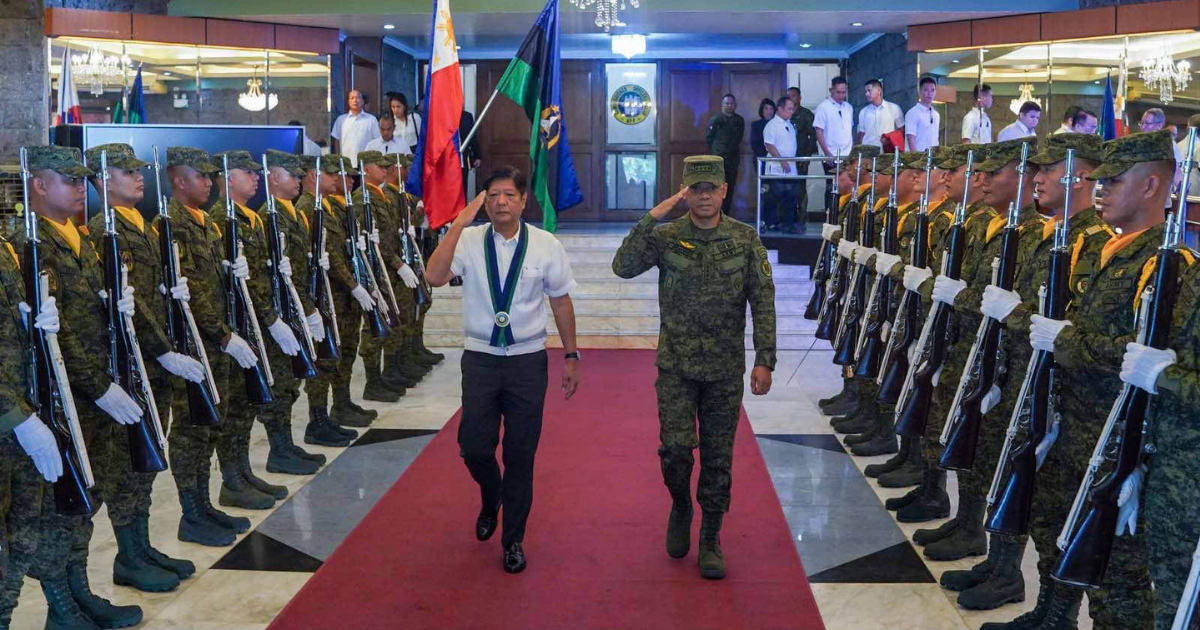Brawner lays down rules of engagement in the West Philippine Sea
President Ferdinand “Bongbong” Marcos Jr. and AFP Chief of Staff General Romeo S. Brawner Jr. during the Armed Forces of the Philippines’ mid-year command conference last July 4, 2024. Photo from AFP.
By Victor Reyes | Date 07-11-2024
MANILA — The Armed Forces chief of Staff, General Romeo Brawner Jr, has clearly laid down the military’s rules of engagement in the West Philippine Sea to avoid a repeat of an embarrassing incident last month in Ayungin Shoal.
Brawner said the military is allowed to employ a similar amount of force when attacked, vowing he would not allow a repeat of the June 17 incident when the Chinese Coast Guard swarmed on the Navy’s two rigid-hulled inflatable boats (RHIB).
“For instance, if someone attacks us, what we will do is that we will apply the same level of force that would allow us to defend ourselves,” said Brawner.
“For instance, if he uses a knife, we will also use a knife, nothing more than that. That’s the concept of proportionality.”
Filipinos were angered in seeing a video released by the Armed Forces when the Navy SEAL team did not fight back when attacked.
Brawner said there was little resistance and the soldiers exercised too much restraint by not using the guns during the incident. (Also read: China is provoking the Philippines to fire the first shot – Trinidad)
“You have the right to defend yourself. But you also have to practice the concept of proportionality of force. That is just one of the concepts that we follow under the rules of engagement,” said Brawner.
“We will not be discouraged. We cannot allow them to again do that to us…We will not allow them to bully us just like that…In the next Rore, we cannot allow them to oppress us. We are going to fight evenly, that’s all I can say.”
In a command conference with President Ferdinand Marcos Jr., the military brass presented an updated territorial defense plan, including several options on how to conduct rotation and resupply (RoRe) missions and other military operations in the West Philippine Sea.
The military said it was also looking “inward” or addressing what he called “united front works” of China to influence other sectors of the society, including the education, business, and local government sectors.
The military also gave a presentation on its information campaign plan, called “Mulat,” which aimed to enhance public awareness of the West Philippine Sea in the face of disinformation and influence operations from China.
Brawner did not provide details of the plans. He said the military will adhere to international laws.
At the same meeting, Marcos instructed the military to find ways to ease rising tensions in the country’s maritime zones.
“The instruction of the President is to de-escalate,” Brawner said. “Again, we cannot discuss details because when we talk about how to escalate, we will discuss operational matters.”
Brawner continued: “We want to avoid war. So these talks such as this will help us in our operations that we will be conducting in the West Philippine Sea, including our RoRe and other operations like maritime patrols, air patrols, and so on.”
Earlier, diplomats from the Philippines and China held the 9th Bilateral Consultation Meeting on the South China Sea in Manila.
Both sides had agreed to disagree, insisting on their respective positions in the maritime dispute.
But the two sides agreed to de-escalate tensions and pursue cooperation on non-military activities, like disaster relief and search-and-rescue operations.

